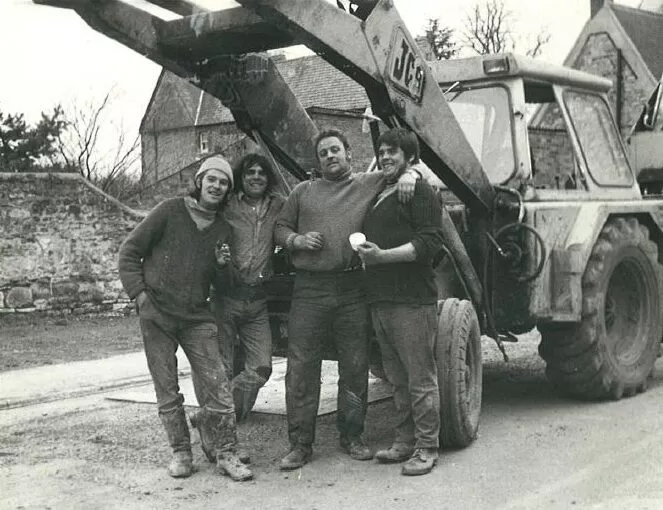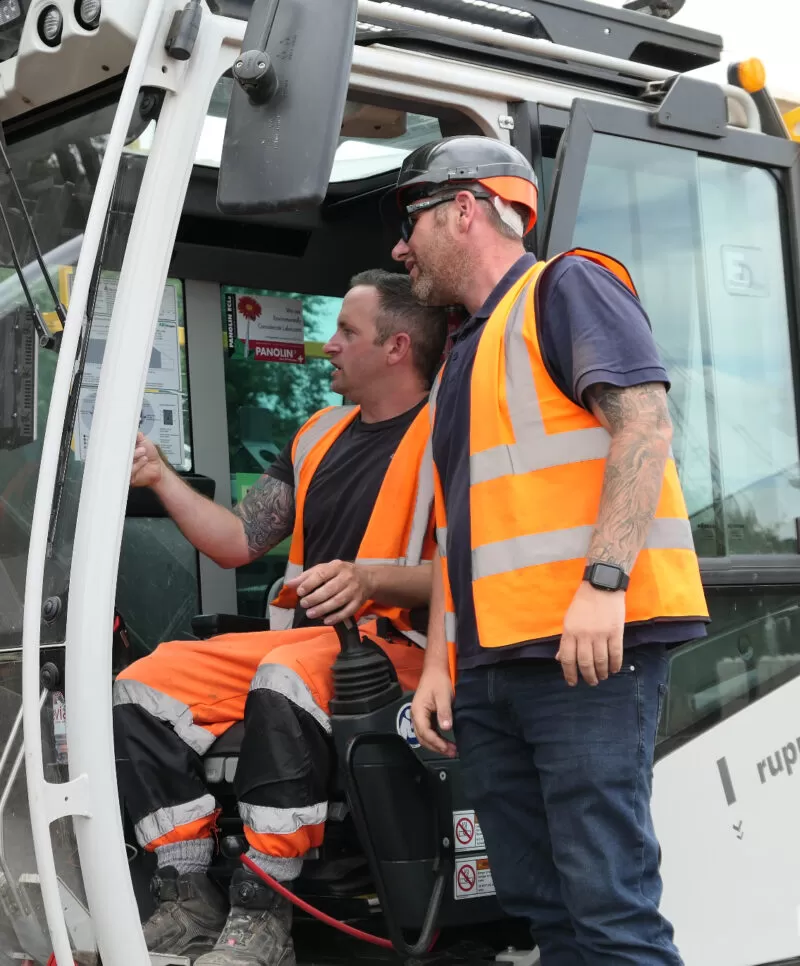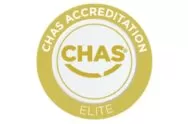The Kings of Piling speak candidly about what makes the company tick
Brothers Simon and Andy King recently featured in NATM Magazine, the UK’s leading specialist Civil Engineering to talk about how Ivor King became a multi-million pound piling business, made in the image of their father’s vision more than half a century ago. Here’s the interview in full, as featured in the December 2024 issue of the magazine.
The Interview
Simon and Andy King – CEO and Contracts Director, Ivor King Piling
Ivor King is a name in Civil Engineering synonymous with Piling. Their story began in 1974, growing from one man’s vision to become a leading UK piling contractor. The company, which turned 50 earlier this year, remains privately owned by the King family who are still heavily involved in the day-to-day operations of the business. We caught up with second generation Kings – Simon (CEO) and Andy (Contracts Director) who continue with pride their father’s legacy.
Q. How did you get into ground engineering?
Simon King: We’ve been in the piling game now for half a century, but the truth is, we kind of fell into it. Our origins lie in farming, but my father also dabbled in civils and took on a piling job, which was successful and we grew from there really. It was a different world back in the ‘70s, when you could just do that sort of thing and have a go. We must have done something right though, as we’re still here and celebrated 50 years in business earlier this year.
Q. What was the job with the worst conditions (and could you elaborate)?
Andy King: We take each job as it comes, some are difficult to get to with extremely tight access, plus we’re out in all weathers, so the elements, particularly wind and rain, and can make conditions quite challenging, but perhaps the biggest challenge of them all is ground conditions, which is where we really come into our own.
Q. Speaking of which, what is the hardest ground you have encountered (and could you elaborate)?
Andy King: Most recently, the flood relief scheme at Matlock, a town centre setting where we installed a flood wall alongside a river and a listed bridge. Going back a bit further, there was Heads of the Valley, which was a major road widening scheme in Wales. Both of those jobs, we installed sheet piles into solid rock using Giken Supercrush, which is a vibration free piling technique for hard ground. We like a challenge at Ivor King!
Q. What is the percentage split of your ground engineering – sheet piling, tubular, bored, CFA? What do you do most of?
Simon King: Our heritage is firmly rooted in sheet piling and it remains the main thrust of the business, but we also have the capability to perform CFA piling. So, when a client comes to us requiring a bit of both on the same job, we can do both. We’ve found this to be of massive benefit to the customer and their programme of works, because it means they only need deal with one piling specialist sub-contractor, rather than two and can speed everything up.
Q. When did you first get into silent and vibrationless piling?
Simon King: Well, we bought our first Giken Silent Piler 12 years ago, but we’ve been doing silent piling since the ‘90s, so we’ve been doing it for a long time and we’ve got lots of experience.
Q. I didn’t realise how much Giken plant you have. Have you always run with the Giken?
Andy King: As a company, we’ve invested a lot into Giken over the last 10 years or so. When you think back to piling techniques my dad would’ve used and how things have changed over the years, Giken really is state-of-the-art compared to what we used to have.
Simon King: It all started with one machine and we’ve expanded the fleet to take advantage of new innovations as they’ve developed. We found a niche in the Supercrush market, which gives us the ability to install sheet piles into hard ground without any vibration, and over the years we’ve become not only Giken specialists, but also Supercrush specialists. We also now offer the GRB System, where all the equipment sits on top of the piles, including the machine and power pack, a clamp crane, even a remote-control pile runner. Ideal for working in narrow corridors where traditional cranes and rigs won’t fit.
Q. What is the reason that you chose Giken?
Simon King: Really, because of the benefits we can bring to the customer – the ability to install sheet piles without noise or vibration. When you’re working in built up urban areas, surrounded by homes and businesses, or perhaps in environmentally sensitive locations, Giken’s the answer that makes the most sense, especially where hard ground is involved. We can install piles with the absolute minimum of disruption to others, and that’s important.
Andy King: To give you an example, we did some work on the Thames Tideway project where we installed what we believe to have been the first ever silently installed high-modulus wall. This was right next to Vauxhall Bridge, directly above the Victoria line, so we were mandated to work through the night, during the hours the Underground doesn’t operate. We were surrounded by all these high-end London apartments and piling through the night during the hot summer months when people have their windows open, but we did it without any disturbance to the residents, and everyone slept through it!
Q. What is the most powerful Giken that you have and could you give us a couple of examples where it has been used?
Simon King: We’ve got a couple of machines that can press in pairs of Z piles, which means you can install 1.4 metre-wide sections in one go. We can also operate them in Supercrush mode, where the ground is augered at the same times as the piles are being pressed in. We call these our ‘double crush machines’. We used it on a flood management project in Great Yarmouth a year or two back where we installed colossal 23.5m Z piles in pairs. You can see a video of that one on our website.
Andy King: I think the longest piles we ever installed in the UK were 25 metres long on a HS2 job in London, each pair of piles weighed about 10 tonnes. On both of those jobs we were installing piles into very hard ground without impact or vibration, so we needed the big double crush machines. But we’ve recently broken our own record and installed 27 metre sheet piles on a rail project overseas in Switzerland!
Q. How many piling rigs do you run with and what type are they?
Simon King: We own half a dozen telescopic leader rigs, a mixture of ABI and RTG equipment, and some of those can install both sheets and CFA piles. Plus we also operate another half a dozen excavators, mounted with Movax equipment, mainly Kobelcos and Hitachis.
Q. If you could pick a favourite piling rig that you have worked with, what would it be? Easy to handle, quick, great mobility, doesn’t break down?
Andy King: That’s quite a tough one, each has its own merits, and we buy rigs that meet the needs of the business at that time. But I suppose I’d go back to when we bought our first two leader rigs, though, as that was such a turning point for the company. In 1996 we got a TM16/20 and a RE12/14, which revolutionised the way we installed piles. Hats off to my dad for having that vision and taking the risk, the legacy of that decision meant we were able to do things much more efficiently, and helped move us into a different league.

Q. When you look to purchase a piling rig, what do you look for? (Brand, size, compatibility)
Andy King: Lots of things – first and foremost reliability, but also service, capability and versatility. SK: We always look for the latest innovations in safety, efficiency and environmental standards as well. We like to do our homework and evolve the fleet to meet the demands of the business and the wider market.
Q. How often do you upgrade your rigs?
Simon King: We have an ethos of Continual Investment at Ivor King, so when funds allow, we upgrade our fleet, and that goes for all our equipment, not just rigs. You have to remember that these are major purchases, and sometimes the numbers don’t necessarily make sense, but you have to see it in terms of evolution, and as we always say, you can’t move forward by standing still. Our continuous replacement programme means we’re generally on a six-to-eight-year turnaround with leader rigs, but as we’ve grown, so too has the size of our fleet.
Q. I didn’t realise you hired/sold sheet piles. How long have you been doing this and what is the annual turnaround (Tonnage, numbers not £’s)
Simon King: We’ve been hiring sheet piles for at least 20 odd years now, but it’s something that’s really developed over the years. As the business has expanded, we’ve been able to allocate a whole section of our yard to pile hire. Our facilities include a separate area for washing and sorting piles, and we’ve got dedicated staff that purely look after hire as a distinct part of the business, but as an important part of part of our whole offering. At any one time, I’d say we have around 700 to 1000 tonnes of steel out on hire these days.
This article appeared in Issue No.288 of NATM Magazine, December 2024















